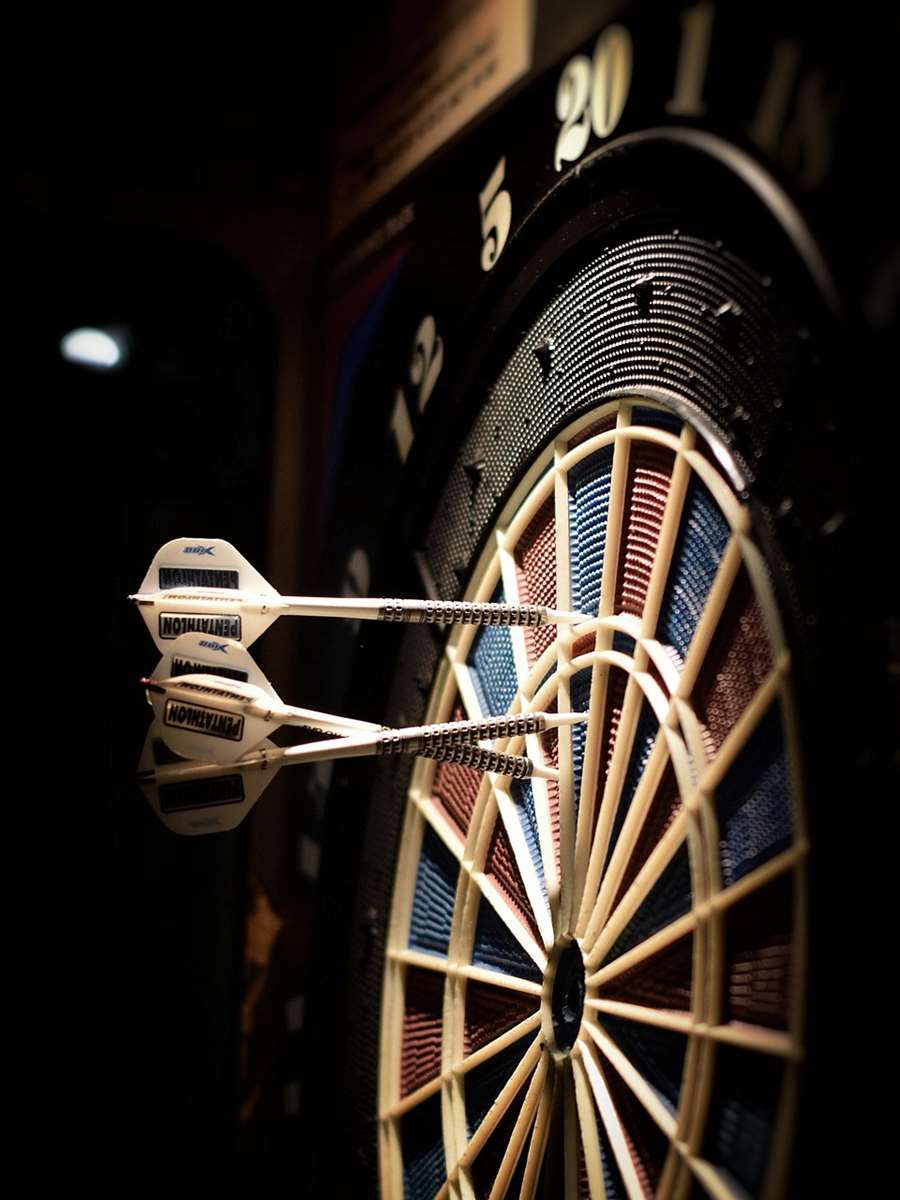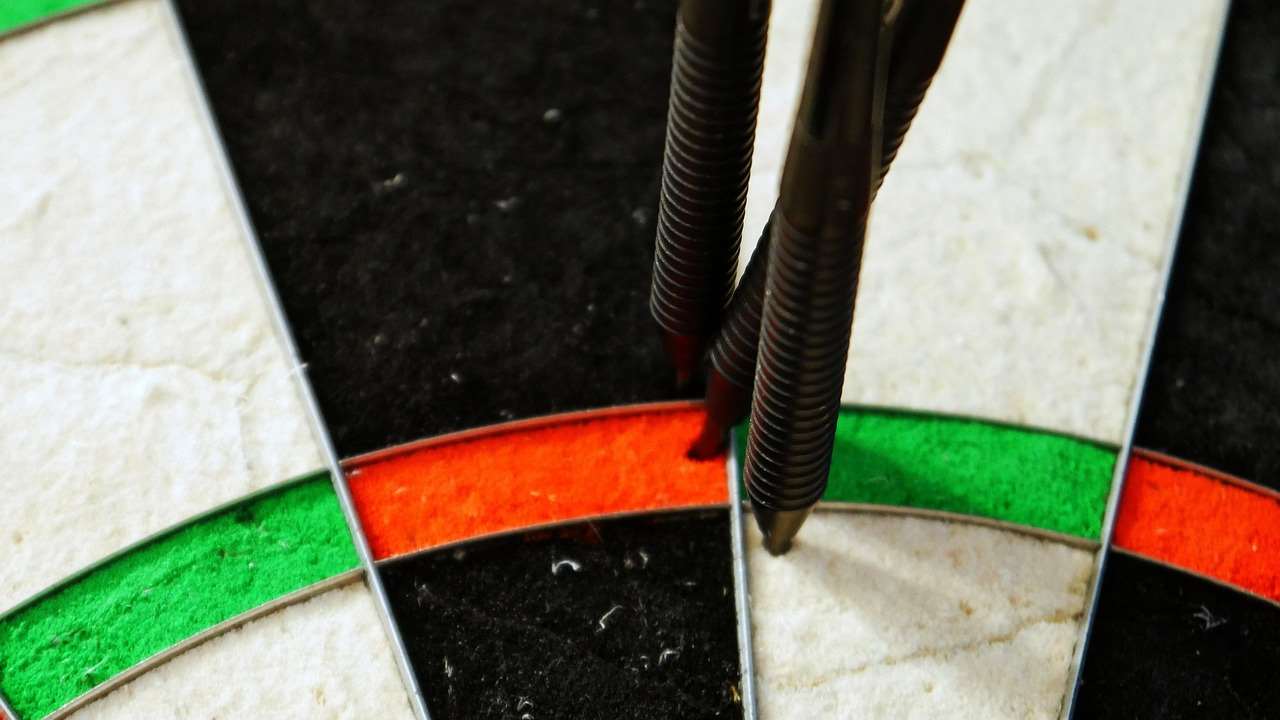The **balance point** of your dart dramatically impacts its flight and your accuracy, and **Measuring Dart Balance Point** allows you to find the sweet spot that complements your throwing style. In dit artikel, we’ll cover how to easily locate your dart’s center of gravity, understand what balance means for your game, and explore how to adjust it to enhance your performance.
⚠️ Still Using Pen & Paper (Of een schoolbord)?! ⚠️
Stap in de toekomst! De Dart Teller -app behandelt alle scoren, stelt kassa voor, en volgt uw statistieken automatisch. It's easier than you think!
Probeer de Smart Dart Teller -app gratis!Klaar voor een upgrade? Klik hierboven!
Why Measuring Dart Balance Point Matters
Understanding and **measuring dart balance point** is crucial for any serious dart player. It influences how the dart travels through the air, how it feels in your hand, en uiteindelijk, your consistency. A dart that’s balanced poorly for your grip and throwing style can wobble, nosedive, or fishtail, leading to frustrating misses. Finding the right balance can feel like unlocking a new level of control.

Think of it like this: a well-balanced dart is like a well-tuned car. It handles smoothly and predictably. An unbalanced dart, anderzijds, is like driving with a flat tire – you might get where you’re going, but it’s going to be a bumpy ride. Your ability to repeatedly hit your target improves significantly with a well-balanced dart that suits your throw.
Factors Affecting Dart Balance
Several factors contribute to a dart’s balance:
- Barrel Weight and Shape: The distribution of weight within the barrel is the primary determinant. A heavier front will shift the balance forward, while a heavier rear will shift it backward.
- Shaft Length and Material: Longer shafts tend to shift the balance slightly towards the rear. Different shaft materials (aluminum, nylon, carbon fiber) also have different weights, affecting overall balance.
- Flight Shape and Size: Larger, heavier flights can create more drag at the rear, influencing stability and, to a lesser extent, balance.
- Point Type and Length: While less significant than the barrel, the point’s weight and length also play a role. A longer, heavier point will shift the balance forward a tiny bit.
By understanding these factors, you can start to experiment and fine-tune your darts to achieve the perfect balance for your individual throwing style. Remember to Kies de beste Dart -apparatuur tailored to your playing requirements.
How to Find Your Dart’s Balance Point
**Measuring dart balance point** is a simple process. You’ll need a stable, flat surface and something thin to balance the dart on, like a ruler edge or even your fingertip. Here’s a step-by-step guide:
- Find a Flat Surface: A table or countertop works well.
- Gather Your Dart: Have the complete dart assembled (barrel, schacht, en vlucht).
- Balance the Dart: Gently place the dart on the edge of the ruler or your fingertip, horizontally.
- Adjust and Observe: Slowly move the dart back and forth until you find the point where it balances perfectly. This is your **balance point**.
- Mark the Spot: If you want to get precise, you can use a fine-tipped marker to mark the balance point on the dart barrel.
Experimenting with different darts and components and then measuring their balance points will give you a better feel for how these elements combine to create a balanced dart.
Tools for Precise Measurement
While the fingertip method is effective for a quick estimate, you can use more precise tools for consistent and repeatable measurements:
- Balance Scale: Specialized dart balance scales are available, although not commonly used by recreational players. These scales provide a digital readout of the balance point location.
- DIY Setup: You can create a simple jig using a ruler, two small blocks of wood, and a level. Place the dart on the blocks and use the level to ensure the setup is perfectly horizontal.
Understanding Balance: Front, Center, and Rear Weighted Darts
Once you know how to measure the **dart balance point**, it’s important to understand what the different types of balance mean for your game. Darts are generally categorized as front-weighted, center-weighted, or rear-weighted.

- Front-Weighted Darts: These darts have their weight concentrated towards the point. They tend to fly straighter and penetrate the dartboard more easily. Many beginners find these easier to control because they naturally want to go forward. They can also be good for those with a smoother throwing motion.
- Center-Weighted Darts: These have their weight evenly distributed along the barrel. They offer a good balance of stability and control and are a versatile option for a variety of throwing styles. Many professional players use center-weighted darts.
- Rear-Weighted Darts: These have their weight concentrated towards the back of the barrel. They can be good for players with a more loopy or arcing throwing motion. They may require more finesse to control, but some players find they provide more accuracy.
The best weight distribution for *you* depends on your individual throwing style and grip.
Adjusting Your Dart’s Balance
The beauty of darts is that they are customizable. You can adjust your dart’s balance in several ways to find the perfect fit:
- Changing Shafts: Experiment with different shaft lengths and materials. Shorter, lighter shafts will shift the balance forward, while longer, heavier shafts will shift it backward.
- Changing Flights: Different flight shapes and sizes can also affect the flight path and perceived balance of the dart. Smaller flights offer less drag and may be suitable for front-weighted darts.
- Adding Weight: You can add small weights to the front or rear of the dart to fine-tune the balance. Special dart weighting tools are available for this purpose.
It’s a process of experimentation. Change one thing at a time, re-measure the **dart balance point**, and see how it feels when you throw.

Experimentatie is cruciaal
There’s no one-size-fits-all answer when it comes to dart balance. The best way to find the perfect balance for you is to experiment with different setups and observe how they affect your throw. Pay attention to how the dart feels in your hand, how it flies through the air, and how consistently you hit your target.
Consider the following when experimenting:
- Keep a Record: Keep a record of the different dart setups you try and the results you achieve. This will help you identify patterns and narrow down your options.
- Be Patient: It takes time to find the perfect dart balance. Don’t get discouraged if you don’t see results immediately.
- Seek Advice: Talk to other dart players and get their opinions. They may have valuable insights or suggestions.
Common Misconceptions About Dart Balance
There are a few common misconceptions about **dart balance point** that are worth addressing:
- Heavier is Always Better: A heavier dart isn’t necessarily better. It depends on your throwing style and strength. Some players prefer lighter darts, while others prefer heavier ones.
- Perfect Balance Guarantees Accuracy: A well-balanced dart is important, but it’s not a magic bullet. You still need to have good technique and practice consistently.
- Balance is Everything: While crucial, dart balance is just one aspect of a good dart setup. The barrel shape, grip, and flight shape also play important roles.
Remember that finding the right dart setup is a holistic process that involves considering all of these factors. Making sure you have proper Types Optimal Dartboard Lighting is also vital.

Advanced Tips for Fine-Tuning Your Dart Setup
Once you have a good understanding of **measuring dart balance point** and how it affects your throw, you can start to explore more advanced techniques for fine-tuning your setup:
- Micro-Adjustments: Even small changes in shaft length or flight shape can make a noticeable difference. Experiment with subtle adjustments to dial in your setup.
- Grip Analysis: Analyze your grip and how it interacts with the dart. A dart that feels comfortable in your hand is more likely to fly consistently.
- Throwing Motion Analysis: Record yourself throwing darts and analyze your motion. This can help you identify areas where you can improve your technique and how your dart balance is impacting your results.
By taking a data-driven approach to dart setup, you can optimize your equipment for maximum performance.
The Importance of a Consistent Setup
One of the most important aspects of dart playing is consistency, and that extends to your dart setup. Once you’ve found a balance and configuration that works well for you, stick with it. Avoid constantly changing your equipment, as this can disrupt your rhythm and negatively impact your accuracy.
Treat your darts as an extension of your arm, and maintain them with care. Keep them clean, replace worn-out shafts and flights, and always double-check that your setup is exactly as you prefer it.

Conclusie: Mastering the Art of Dart Balance
**Measuring Dart Balance Point** is a fundamental skill for any dart player looking to improve their accuracy and consistency. By understanding how balance affects dart flight and taking the time to experiment with different setups, you can find the perfect dart for your individual throwing style. Remember that it’s a process of experimentation and refinement, so be patient and persistent.
Uiteindelijk, the goal is to find a dart that feels comfortable in your hand, flies predictably through the air, and helps you consistently hit your target. Take the time to explore the world of dart balance, and you’ll be well on your way to becoming a more skilled and confident dart player. Now that you understand the importance of dart balance, why not start experimenting today? Find a local dart shop, try out different darts, and discover what works best for you!
Hoi, Ik ben Dieter, En ik heb Dartcounter gemaakt (Dartcounterapp.com). Mijn motivatie was geen darts -expert - helemaal tegenovergestelde! Toen ik voor het eerst begon te spelen, Ik hield van het spel, maar vond het moeilijk en afleidend om nauwkeurige scores te houden en statistieken te volgen.
Ik dacht dat ik niet de enige kon zijn die hiermee worstelde. Dus, Ik besloot om een oplossing te bouwen: een eenvoudig te gebruiken applicatie die iedereen, Ongeacht hun ervaringsniveau, zou kunnen gebruiken om moeiteloos te scoren.
Mijn doel voor Dartcounter was eenvoudig: Laat de app de nummers afhandelen - het scoren, de gemiddelden, de statistieken, Zelfs checkout suggesties - zodat spelers puur kunnen richten op hun worp en genieten van het spel. Het begon als een manier om het probleem van mijn eigen beginners op te lossen, En ik ben heel blij dat het is uitgegroeid tot een nuttig hulpmiddel voor de bredere darts -community.